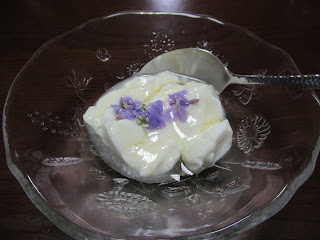Under the State of Emergency against Covid-19, Kanagawa Prefecture and the City of Yokohama have closed the gates of every municipally owned facility in the forests, museums, libraries, etc. to the visitors. Lovers Associations for Yokohama’s Citizen Forests have stopped our forestry volunteering. Association of Kanagawa Forest Instructors has decided to postpone all the activities at least till the end of coming August. Both Niiharu Lovers and Forest Instructors Association are legally required to hold general assembly to discuss the activities done during the FY2019 and planned for FY2020. The executive committees are scrambling to devise the way to cope with the situation …
Meanwhile, our forests are receiving far far many more visitors than the pre-Corona days. Niiharu Lovers Association has stopped our activity from Saturday, 11th of April, the first weekend since the declaration of the State of Emergency. That Saturday, we had out-of-season snow shower in Yokohama, and the next day was wonderfully sunny April Sunday. I’ve heard Niiharu Citizen Forest was visited by a “crowd” many of whom would have never thought to enter the forest before. One senior member of the Association emailed me. “There were lots of teenagers who could normally spend their weekend in shopping centers. Families came and did whatever they wanted, ignoring the course ropes that shielded the fragile habitat from human stomping. Dogs were unleashed and running around. Lots of trash were left. Even the thefts of precious vegetation were reported!” On April 12th, there was a long line to enter the parking for Niiharu Forest. The police was receiving complaints from the neighbors about illegal parking in front of their houses near the Forest. Oh my …
Yeah, 67ha open-air of Niiharu Forest has a capacity for welcoming people. There, the risk of infection by COVID-19 would be smaller than in a department store. At least, the City Office has requested the Lovers Association to keep open the gate for parking during the weekends. People need nature to relax during this very stressful time, right? Yet, so far we have been careful to protect our natural environment. We even did not accept school excursions when kids plan to hike the Forest in a group of more than 20. Now, we’ve faced the dilemma. On the one hand, we are more than happy if people could experience and recognize the treasurable nature, aka Niiharu Forest, in this very large urban area. The pandemic did a great marketing for the Forest to be known as a relaxing place. On the other, we really do not know how the Forest copes with a sudden surge of visitors. What to do?
Lovers Association started to patrol the Forest during weekends, unofficially. Then, interesting thing happened. Once volunteers walk around with Association hats and armbands, people begin to behave better. During last weekends, the City has not received the news of troubles in Niiharu Forest. Wooooow. Still, the number of visitors was definitely larger than usual. Eventually, we’ll see what would happen for Niiharu Forest in the post-COVID …
If you find a problem in Yokohama’s North
Forests, please make a contact with
Office for the Park
Greeneries in the North 北部公園緑地事務所
Yokohama Municipal Government
Creative Environment Policy Bureau 横浜市環境創造局
Phone: 045-311-2016
FAX: 045-316-8420
If you find
environmental issues in Kanagawa Prefecture, please make a contact with Kanagawa
Natural Environment Conservation Center 神奈川県自然環境保全センター
657 Nanasawa, Atsugi
City, 243-0121
〒243-0121 厚木市七沢657Phone: 046-248-0323
You can send an
enquiry to them by clicking the bottom line of their homepage at http://www.pref.kanagawa.jp/div/1644/















































